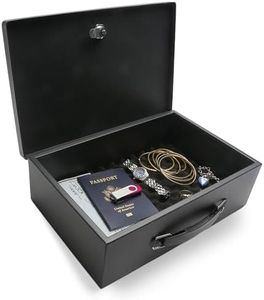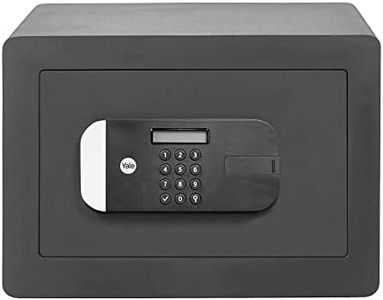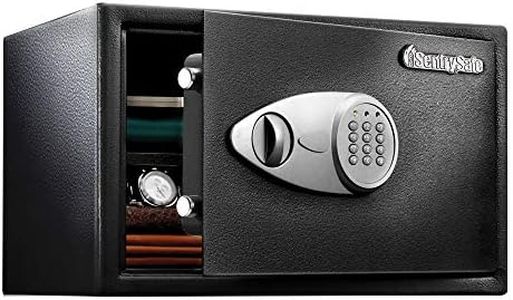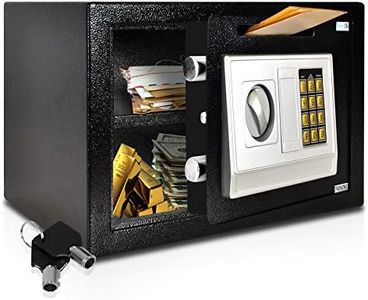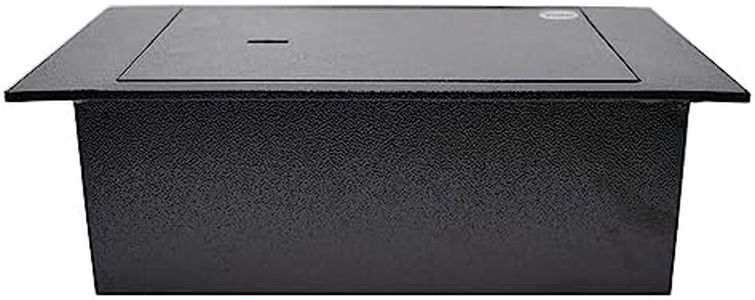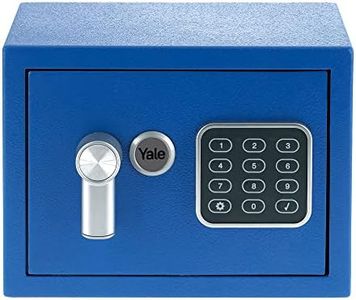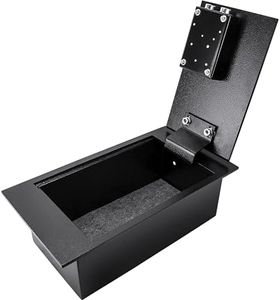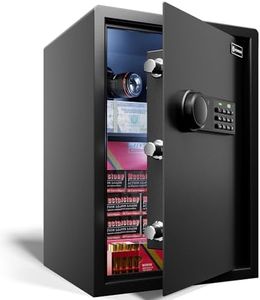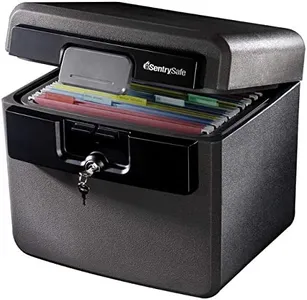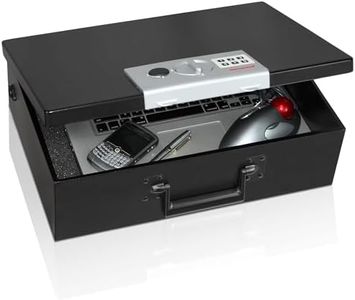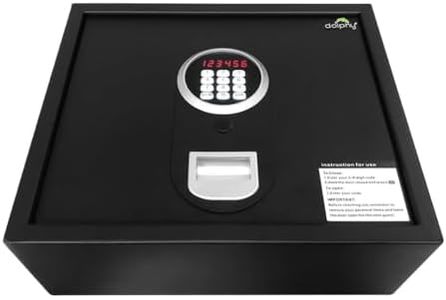We Use CookiesWe use cookies to enhance the security, performance,
functionality and for analytical and promotional activities. By continuing to browse this site you
are agreeing to our privacy policy
10 Best Floor Safes
From leading brands and best sellers available on the web.Buying Guide for the Best Floor Safes
Choosing a floor safe is an important decision if you want to securely protect valuables like documents, jewelry, or cash in your home or business. The key is to match the safe’s features to your specific needs in terms of security level, the type of items you want to protect, and the available space. Understanding the main specifications of floor safes will help you make an informed decision and prevent frustration over a safe that’s too small, too hard to use, or not secure enough for your requirements.Security RatingThe security rating tells you how resistant the safe is to attacks like drilling, prying, or forced entry. Ratings might be given by recognized organizations or described by terms like 'burglary resistant.' Higher security ratings mean tougher protection, often with thicker steel and more complex locking mechanisms. For storing highly valuable or irreplaceable items, go with a higher rating, while for less critical storage, a basic security level may be sufficient.
Fire ResistanceFire resistance measures how well a safe can protect its contents from high heat or flames, usually described in terms of minutes or hours and the maximum internal temperature allowed. Floor safes may or may not have fireproofing. If you plan to store important documents or items sensitive to heat, prioritize safes with longer fire ratings. If only theft protection matters to you, fire resistance might not be as crucial.
Size and CapacityThe size and capacity of a floor safe refer to the internal space available for your valuables. Sizes range from compact versions holding only essentials to larger safes for bulkier items. Think about what you want to store now and what you might want to store in the future. Don’t just match the safe to your current items; leave room for occasional expansion. Also, ensure the chosen location in your floor can accommodate the safe’s physical dimensions.
Locking MechanismThe locking mechanism is how you open the safe, with common options including key locks, combination dials, and electronic keypads. Key locks are straightforward but require key management, while combination and electronic locks offer more convenience and may provide quicker access. Consider who will use the safe and how often—it’s about balancing ease of access with security, and picking the type you’ll reliably use and maintain.
Water ResistanceWater resistance describes how well the safe protects its contents against flooding, spills, or being submerged. This is particularly important if you’re installing your safe in a basement or an area prone to leaks. Not all floor safes prioritize this feature, so if water damage is a concern where you live or work, seek out safes with water resistance certifications and proper seals.
Installation RequirementsInstallation requirements refer to what’s needed to securely fit the safe into your floor. Floor safes need to be encased in concrete for best security and often require professional installation. Think about your building’s layout, accessibility for installation, and whether permanent alteration is acceptable. Those willing to invest in a more complex installation will gain better protection, but make sure the process fits your property and long-term plans.
Accessibility and Door DesignThis refers to how easily you can reach and organize contents inside the safe once installed. Some floor safes have deep or narrow interiors, and heavy or top-opening doors can be awkward to use. Consider how often you’ll need access and try to choose a design that won’t cause inconvenience, especially in tight spaces or for frequent use.
